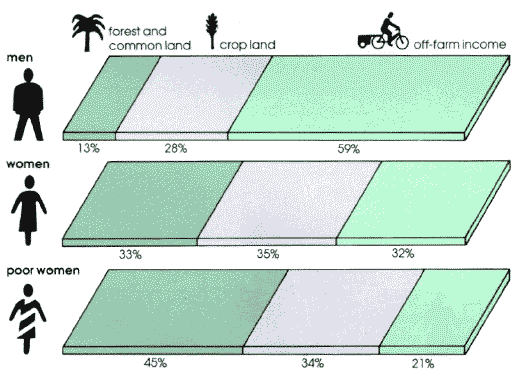


Small-scale, forest-based enterprises, such as the collection and processing of raw materials into useful products, are a major source of income for the poor, and especially for rural women, including those from landless families.
The forest provides many materials that with care, skill and time can be turned into useful products- rattan canes for making furniture, fibres to make nets, .ropes and mats, bamboo for basketry, gums and resins, and leaves for making cigarette wrappings (the harvesting of tendu leaves for the latter in India is estimated to employ nearly 600 000 women and children (see box, page 22).
In India, in the early 1970s, small-scale, forest-based enterprises provided some 25 percent of total forest production, more than 60 percent of forest-based exports and were responsible for about 1.6 million of the 2.3 million jobs in the forestry sector as a whole. Even these statistics are undoubtedly under-estimated because accurate accounts are seldom kept for small enterprises, many of which employ women exclusively. A survey in the Fayoum Province of Egypt, for example, showed that 48 percent of the women there worked in minor forest industries of one kind or another. However, employment in these enterprises is generally on a part time or seasonal basis, and the wages are low. For women with few ways of earning money, the forest and its products are often the best option.
Because scarcity has so raised the price of fuelwood and charcoal, many women now add to their incomes by selling fuel they gather for others. In a survey of 14 villages in Himachal Pradesh, India, 70 percent of the women travelled more than 6 km a day to collect fuelwood for sale or their own use. In Manipur, of 100 women surveyed, two-thirds collected minor forest products as their only source of income.
The advantages of all these activities are that the raw material is accessible, the work is seasonal and flexible- and can therefore be fitted in with the agricultural season and daily chores- and initial investment is low. For many women, especially those in landless families or without access to common land, the collection of forest products, and fashioning them into saleable commodities, provide the only form of cash income they have.
Souces of income for men, women and poor women

studies in Uttar Pradesh, India, show the relative importance of forest and common land to three groups of people: men, women and poor women. Nearly 50 percent of the latter's income comes from forest and common land, compared to only about one-eighth for men